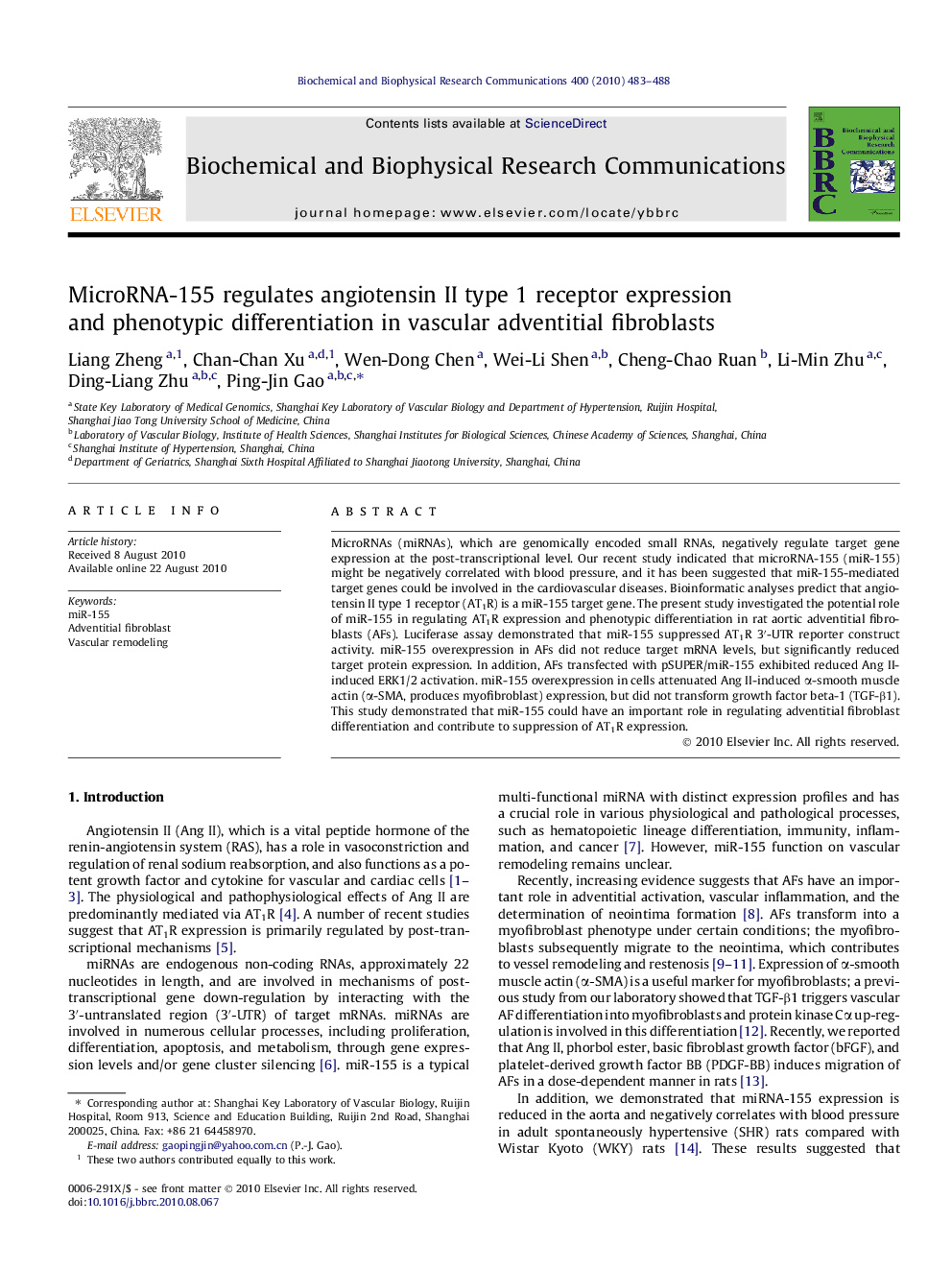| Article ID | Journal | Published Year | Pages | File Type |
|---|---|---|---|---|
| 1931339 | Biochemical and Biophysical Research Communications | 2010 | 6 Pages |
MicroRNAs (miRNAs), which are genomically encoded small RNAs, negatively regulate target gene expression at the post-transcriptional level. Our recent study indicated that microRNA-155 (miR-155) might be negatively correlated with blood pressure, and it has been suggested that miR-155-mediated target genes could be involved in the cardiovascular diseases. Bioinformatic analyses predict that angiotensin II type 1 receptor (AT1R) is a miR-155 target gene. The present study investigated the potential role of miR-155 in regulating AT1R expression and phenotypic differentiation in rat aortic adventitial fibroblasts (AFs). Luciferase assay demonstrated that miR-155 suppressed AT1R 3′-UTR reporter construct activity. miR-155 overexpression in AFs did not reduce target mRNA levels, but significantly reduced target protein expression. In addition, AFs transfected with pSUPER/miR-155 exhibited reduced Ang II-induced ERK1/2 activation. miR-155 overexpression in cells attenuated Ang II-induced α-smooth muscle actin (α-SMA, produces myofibroblast) expression, but did not transform growth factor beta-1 (TGF-β1). This study demonstrated that miR-155 could have an important role in regulating adventitial fibroblast differentiation and contribute to suppression of AT1R expression.
Research highlights► We reported that miR-155 can markedly decrease the expression of AT1R protein in vascular AFs. ► Our experiments suggest miR-155 may play a role in Ang II induced phenotypic differentiation via AT1R. ► According to our results, miR-155 might spark off great interest in diagnosis and therapy of cardiovascular diseases.
